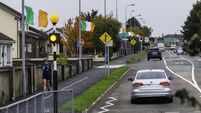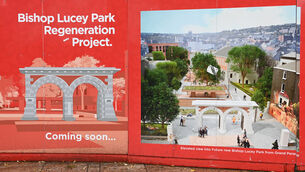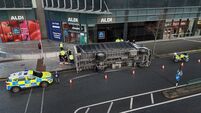Dark skies help us see the starlight
Satellite photographs of Ireland and neighbouring countries at night show that while we still have some of the darkest skies left in Europe, especially along the western seaboard, the situation is changing.
Just consider Dublin and the 47,000 lights it takes to illuminate the city. About 30% of that light is unnecessary and creates “sky glow”, experts say. In Cork, Galway, Dublin and Belfast, it’s harder than ever to spend the night stargazing.
People living in many parts of Co Cork can clearly see the glow over the city at night, even at 25km or more from the city.
Back in the 1600s, Galileo wrote that the stars in the Milky Way were packed so densely that they appeared like clouds. Thirty years ago, it was possible to see 7,000 stars in the Milky Way over Liverpool. Tonight, that figure could be down to a few hundred stars.
Light pollution is something we have not yet woken up to, though Dublin City Council, along with Kerry and Clare County Councils, have made a start by including ways of dealing with such pollution in their development plans.
Yet, the scale of powerful lighting seems to be increasing. It’s not just street lighting: more public and commercial buildings, such as hotels, shopping centres and nightclubs are being floodlit.
Increasingly, sporting organisations are providing floodlights on their pitches, some of which can create an oasis of extremely bright light in the heart of rural Ireland. And there’s a continuing trend to light up private residences at night, either for vanity or security.
Kerry Astronomy Club says our towns are rapidly expanding and little regard is being given to light pollution and its negative effects on the environment and the night sky.
In Kerry, planning applicants have to submit details of outside lighting with their applications and must show the lighting proposed is the minimum needed for security and working purposes.
The Kerry Astronomy Club says: “While most of the rest of Europe has started the costly process of replacing inefficient, poorly directed and polluting streetlight fittings, we are still not requiring the specification ‘full cut-off’ lights for outside, street and road lighting. Tralee now has a level of light pollution similar to that of Cork and Limerick, both much larger towns. On the map (of night lighting in western Europe) you can make out Tralee, Limerick and Cork as the worst offenders. But smaller towns are catching up.
“Killarney, Bandon, Mallow, Charleville and Listowel have all degraded to the yellow level. You can also make out Dingle, Castelisland, Kenmare, Kinsale, Abbyfeale, Bantry, Kanturk, Millstreet, Macroom and Cahersiveen.
“If you look at a similar map of all of Ireland and of western Europe you will see that, while we do have some of the darkest skies left in all of Europe, we are rapidly degrading this precious resource.”
On Saturday night, October 20, the authorities in San Francisco asked the city’s citizens to turn off their lights between 8pm and 9pm so that they could gaze at the stars. It is estimated they saved 15% of the energy normally consumed on an average Saturday night.
After more than 12 years of campaigning, the Republic of Slovenia adopted its first light pollution law on August 30, making it one of the leading countries in the EU in this area. Expected benefits include energy savings of some €10 million a year.
Light pollution has huge effects on wildlife, especially on nocturnal creatures such as bats, owls and numerous moths and insects.
The International Dark Skies Association recommends:* Shields on street lights to direct the light and turn off unnecessary street lighting during the early hours of the morning.
* Heat-sensored lights to light up homes for security.
* Floodlighting of commercial properties to be limited.
* Lighting of sports grounds should be directed downwards so as not to interfere with neighbouring properties.
* Lighting plans for any new developments should have to be submitted with the planning application and should be kept to a minimum.














